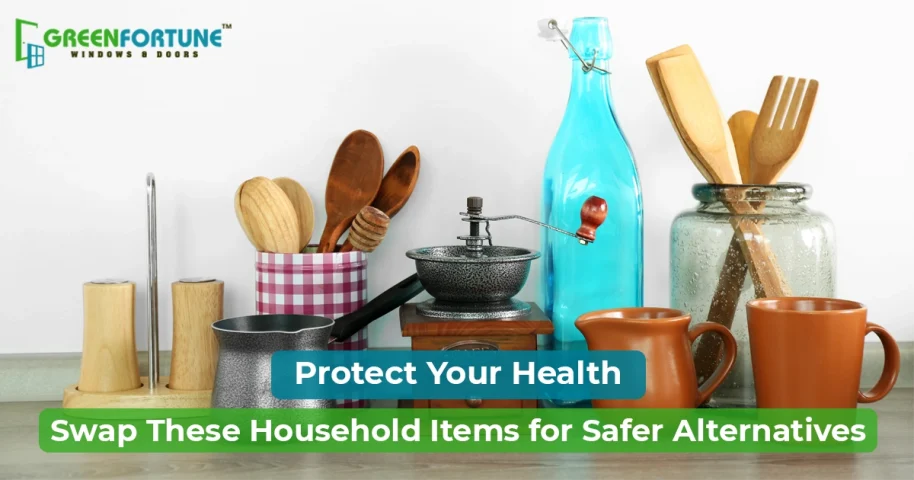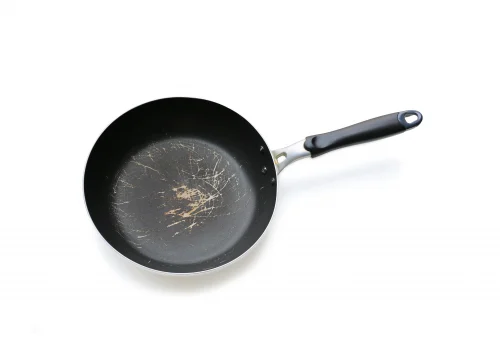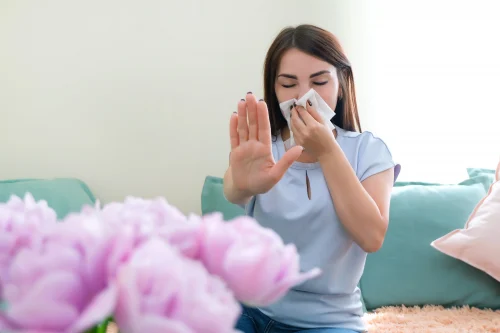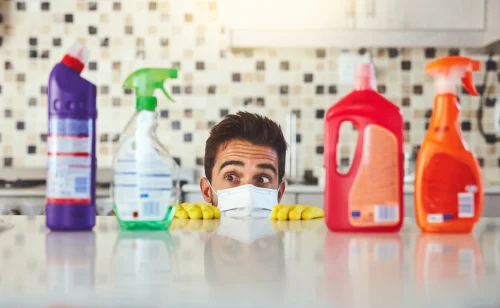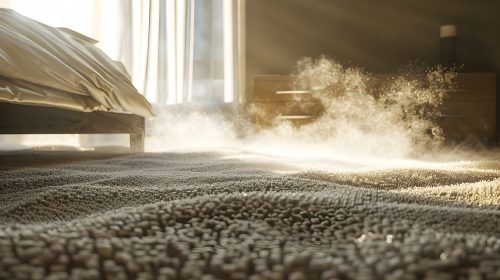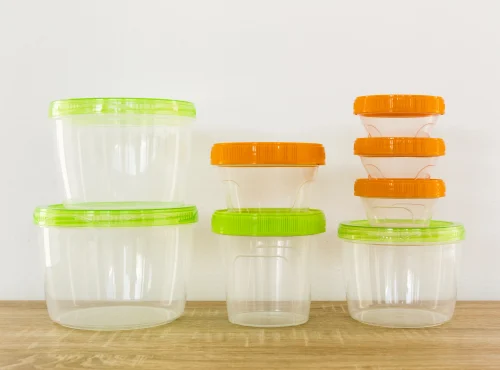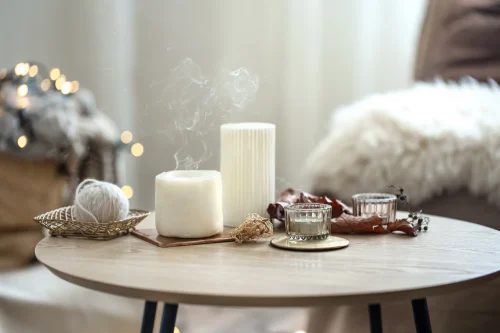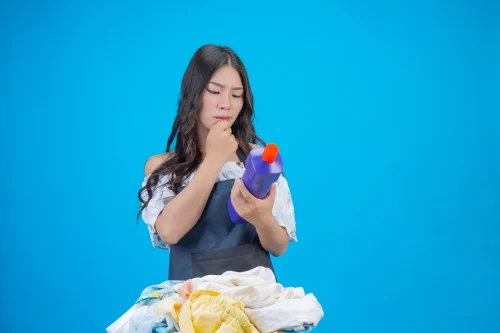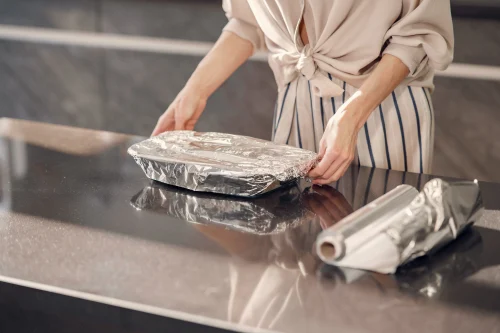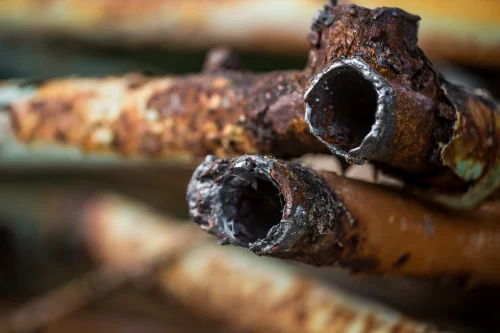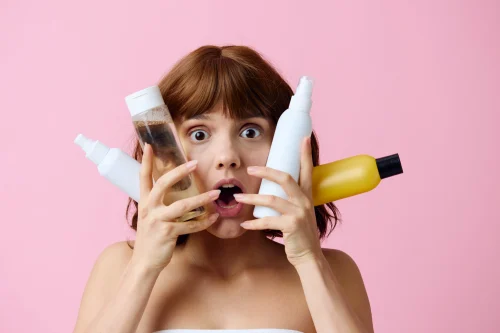
Stylish TV Panel Design for Bedrooms: Ideas for Small Spaces and Wall-Mounted Setups
May 13, 2025
Interior Colour of House: A Complete Room-by-Room Guide with Expert Tips
May 13, 2025Many household materials are used daily, but some can harm your health in ways you might not expect. While most people are aware of risks like expired products or dirty trash cans, other everyday items pose hidden dangers. As you read through this list, you may even recognize a few as part of the top 10 useful household items. However, these common materials can contribute to serious health issues over time.
In this blog, we’ll highlight 10 household items that could be impacting your health and also provide safer alternatives you can use instead of these common household items.
1. Non-stick Cookware
Non-stick pans are one of the top 10 useful household items because they make cooking easier. But they can quietly affect your health. When overheated, the Teflon coating can release toxic fumes. Breathing in these fumes may cause flu-like symptoms, headaches, and dizziness.
Older non-stick pans may also contain PFOA, a chemical linked to cancer. Even if the pan is newer, a scratched or chipped surface can release flakes of the coating into your food. These materials aren’t meant to be ingested and some are considered carcinogenic.
Tip: Avoid using high heat. Throw out any scratched or damaged non-stick pans. Use safer options like stainless steel or cast iron.
2. Air Fresheners
Air fresheners are commonly used to make homes smell good, but many of them release volatile organic compounds (VOCs) into the air. These VOCs can irritate your eyes, nose, and throat and may even trigger asthma symptoms. Some of the chemicals found in air fresheners are linked to hormone disruption and long-term respiratory issues.
Tip: Choose natural alternatives like essential oil diffusers or deodorizers made with baking soda. Open windows regularly to improve airflow.
3. Cleaning Products
Cleaning products are common household materials especially used for laminate cleaning, but many contain harsh chemicals like bleach and ammonia. These can irritate your skin, eyes, and lungs. Breathing them over time may lead to respiratory problems.
Mixing certain cleaners, such as bleach and vinegar, can create toxic gases that are dangerous to inhale. Even products with fresh scents can release chemicals that lower indoor air quality.
Tip: Always read the label. Wear gloves and keep the room well-ventilated while cleaning. Choose safer alternatives like vinegar, lemon juice, or natural, plant-based products.
4. Old Carpets
Old carpets can trap dust, pet dander, mold, and allergens deep in the fibers. These particles do not go away easily and can reduce the air quality inside your home. People with asthma or allergies may notice more symptoms in carpeted rooms.
The buildup of dust and allergens is often overlooked, but it can affect your breathing and overall health over time.
Tip: Clean carpets regularly using a vacuum with a HEPA filter. If possible, switch to hard flooring like wood or tile to reduce buildup.
5. Plastic Food Containers
Many plastic food containers contain BPA, a chemical linked to hormone disruption. When you heat plastic in the microwave or store acidic foods in it, BPA can leach into the food. Over time, this exposure may impact your health.
Even plastics labeled microwave-safe can still break down under heat and release harmful chemicals.
Tip: Use BPA-free containers or switch to glass containers made for microwave use. Avoid heating any food in plastic whenever possible.
6. Scented Candles
Scented candles help create a cozy feel, but many are made with paraffin wax, which can release harmful fumes and soot when burned. These fumes may irritate your lungs and lower indoor air quality.
Some candles also contain artificial fragrances and dyes that can trigger allergies or breathing issues, especially in people with asthma or sensitivities.
Also read: How can Vertical Garden Plants improve indoor air quality.
Tip: Choose candles made from soy or beeswax. Look for cotton wicks and natural fragrances for a safer option.
7. Laundry Detergents
Some laundry detergents contain harsh chemicals and synthetic fragrances that stay on clothes even after washing. These substances can irritate your skin and may affect indoor air quality when clothes dry inside the house.
The strong scents may seem pleasant but often come from chemical mixtures that are not always safe for long-term exposure.
Tip: Use fragrance-free or plant-based detergents. Rinse clothes well to remove leftover chemicals, and avoid fabric softeners with heavy perfumes.
8. Aluminum Foil for Cooking
Aluminum foil is common in kitchens for baking and grilling. But when heated, especially with acidic foods like tomatoes, it can leach aluminum into your food. High levels of aluminum exposure have been linked to neurological issues, including Alzheimer’s disease.
Tip: Use parchment paper for baking. Avoid wrapping or cooking acidic foods in aluminum foil to reduce your risk.
9. Tap Water from Old Faucets
Water from older plumbing pipes and systems may contain small amounts of lead, copper, or other metals that leach from aging pipes. Long-term exposure to these metals can harm your kidneys, nervous system, and overall health.
Tip: Install a certified water filter that removes heavy metals. Let the tap run for a few seconds before using it for drinking or cooking, especially if your home has older plumbing.
10. Cosmetic Products
Parabens are commonly used as preservatives in beauty products like shampoos, lotions, and makeup. However, they have been linked to hormone disruption and allergic reactions. Prolonged exposure to parabens may also increase the risk of certain types of cancer.
Tip: Choose paraben-free cosmetics or opt for natural skincare products with fewer synthetic chemicals.
Final Thoughts
Whenever you come across a list of top 10 useful household items, always double-check the information and read product labels carefully. Each item has different consumption thresholds and conditions. Take the time to review your home and consider safer alternatives. By being more aware of the materials you use, you can make smarter choices that promote a healthier and safer living environment.
One such element is uPVC windows and Doors. GreenFortune offers the best quality uPVC materials which are safe for use.
FAQs
- Are natural cleaning products as effective as chemical cleaners?
Yes, many natural cleaning products, like those containing vinegar, baking soda, and lemon juice, are highly effective at cleaning and can tackle stains, disinfect surfaces, and even remove odors. - How can I tell if my tap water contains lead?
If you live in an older home, it’s possible that your water may contain lead due to aging plumbing. You can get your water tested through a local water supplier or use home water testing kits available at most hardware stores. - Are PVC pipes harmful to health?
PVC pipes are commonly used in plumbing, but they can release harmful chemicals, particularly during installation or if the pipes degrade over time. It's important to ensure that the pipes are properly installed and that they are not exposed to extreme heat. Also read: Right Water Pipes for home







